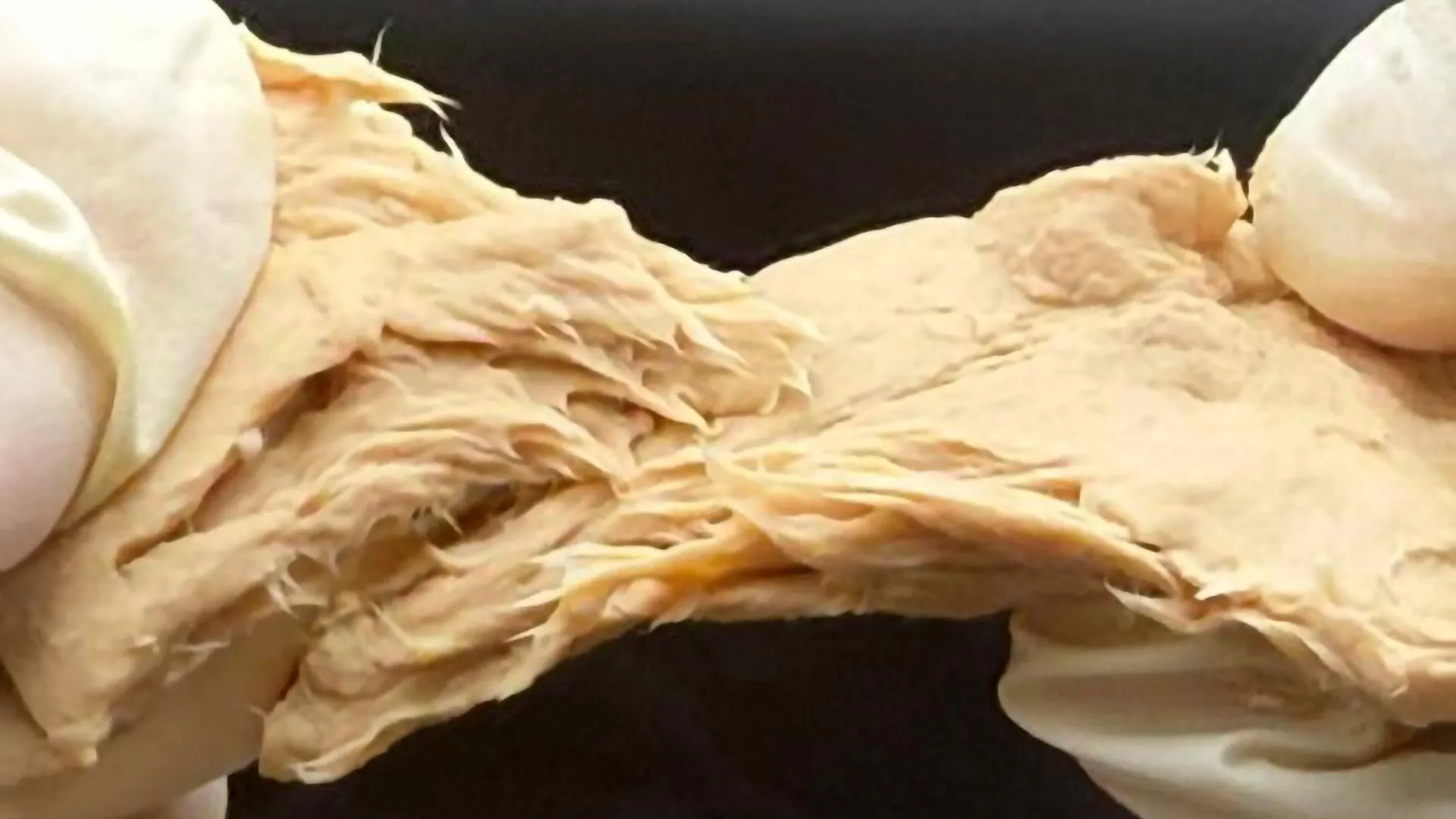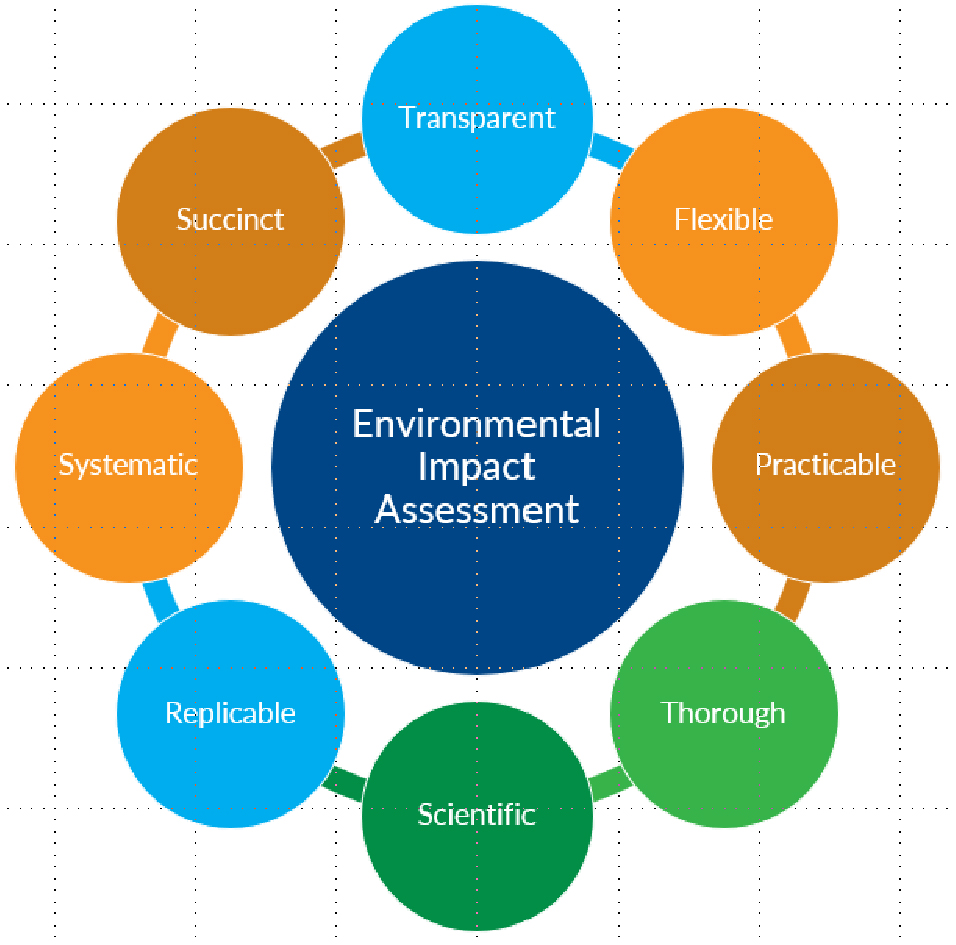Recent advances and sustainable development of biofuels production from lignocellulosic biomass
The advances in the biofuel generation using lignocellulosic biomass is discussed in detail.
Graphical abstract

Biomass is one of the most ample and sustainable carbon sources on the planet. Agricultural crop residues, algae, forestry residues, wood processing residues are the major biomass sources for the production of bio-energy. In terms of application-oriented downstream processing of biomass products, lignocellulose has shown to be a preferable option. Lignocellulose is a complex matrix made up of a thick lignin and hemicellulose structure that wraps around the cellulose molecules (Ma et al., 2019, Isikgor and Becer, 2015, Fan et al., 2021). The residual portion of lignocellulosic biomass is made up of extractives such as oil, ash and proteins. Lignocellulosics are a biotechnologically valuable substrate due to the chemical attributes of its constituents. These lignocellulose materials are high in energy compounds and may be utilised as raw materials in a variety of industries. Bioconversion of specific constituents from lignocellulosic wastes has been used in bio refining to produce a variety of bio-products. Lignocellulosic bio-refinery consists of two different types of conversions (i) sugar (Fermentation of sugars obtained from the biomass) and (ii) syngas/thermochemical conversion (gasification of biomass to produce syngas) (Liu et al., 2020, Zhang et al., 2020a). In sugar fermentation, lignocellulosic components are transformed into biofuels and bioproducts. On the other hand, syngas or thermochemical conversion, converts biomass into useful substrates for downstream fermentation. Organic acids, biopolymers, proteins, biofertilizers, composites, industrial enzymes and biofuels are among the products of lignocellulose bioconversion (Dietrich et al., 2018, Arevalo-Gallegos et al., 2017, Kumar et al., 2015, Laure et al., 2021).
In recent years, global economic development has raised energy demand more than consumption. Excessive use of fossil fuels has resulted in price hikes and greenhouse gas emissions that were not anticipated. All of these flaws in fossil fuels, together with their rapid depletion, have promoted the concept of alternate, inexpensive and renewable energy sources like biofuels (Kumar et al., 2020, Kumari and Singh, 2018, Moshood et al., 2021). From a strategic view point, biofuels are one of the most significant renewable fuel sources. Biochar, fuelwood, biodiesel, alcohols – methanol, ethanol, butanol, biomethane and biohydrogen are just a few of the solid, gaseous, and liquid biofuels produced from bio-sourced feedstocks (Ko et al., 2020, Soltanian et al., 2020). Second generation biofuels made from lignocellulose biomass are the most favourable of the four generations owing to their relative abundance, eco-friendliness, economic sustainability and zero carbon emissions (Lin and Lu, 2021, Liu and Qu, 2018).
Complex lignocellulose structures possess recalcitrant character inhibiting their breakdown for generating useful products. Lignin, in particular, is a major physical barrier that obstructs the enzymatic breakdown process. As a result, an appropriate pretreatment approach is required to maximise the deconstruction of complicated structures (Prasad et al., 2019, Oliveira et al., 2019a). Pretreatment procedures modify the chemical content and macromolecular structure of the material, making it more vulnerable to subsequent degradation or hydrolysis. Pretreatment is the major unit operation in lignocellulose biorefinery and accounts for about 20% of total capital investment. In the industrial scale, pretreatment is quite expensive among the several processes involved in biorefinery process. Physical, chemical, physicochemical, and biological processes are among the pretreatment strategies now in practice. Each pretreatment process has its own set of benefits and drawbacks (Amin et al., 2017, Roy et al., 2020, Veluchamy et al., 2018, Mulyaningtyas and Sediawan, 2019).
Metabolic engineering and genetic engineering has recognized as important tools to improvement in the hydrolysis and fermentation process, and wide range of substrate utilization. (Ghag et al., 2019, Zhou et al., 2021). Microorganisms may now alter biosynthetic pathways to produce more enzymes because of advances in molecular and synthetic biology. Manipulations like as overexpression of genes, enzyme engineering, gene knockout, and gene insertion targeting are successful in regulating pathways of interest in the metabolic engineering method. Through this, microbes would acquire intracellular and intercellular signal processing capabilities with pathway expression control, allowing gene regulation and expression to be coordinated for maximum output (Brar et al., 2021, Jin and Cate, 2017, Yao and Shimizu, 2013). By providing relevant information that can be utilised for analysis, design, and operation of any fermentation process, the model may effectively represent the interaction among the numerous state variables and quantitatively explain the behaviour of fermentation. For determining the behaviour of biofuel generation from lignocellulose, some models use only two to three factors, while others consider a variety of structural and compositional characteristics (Monlau et al., 2012, Mullai et al., 2013).
The aim of this study is to review the current advances in lignocellulose-based biofuel production. This review provides an overview of the following: (i) variables that contribute to the bioconversion process, including recalcitrant (ii) biorefinery properties of lignocellulose biomass and (iii) different pretreatment methods and (iv) conversion mechanism. This review critically describes different pretreatment processes used for lignocellulosic pretraetment and their effects on biofuel generation. This review gives an overview of the recent advances on the bioconversion mechanism of lignocellulose into biofuel. For future advances, each technique – genetic engineering and metabolic approach – has been discussed in depth. Modeling associated to biofuel production considerations is also referred to in order to fully comprehend the biofuel production process.
In the context of biofuel production from lignocelluloses, deconstruction of the plant cell wall is one of the tedious processes. Biomass recalcitrance is a multi-parametric, intrinsic property conferred by lignocellulose attributes that defend carbohydrates against chemical or biological degradation. Lignocellulosic biomass made up mostly of lignin, cellulose and hemicelluloses has a recalcitrant property that is directly connected to its structural form, arising from interactions between these primary component molecules (Lu et al., 2019, Gao et al., 2021). To segregate these key compounds, notable chemical, biological and mechanical forces are necessary.
The chemical composition of lignocellulose is an important element in its recalcitrance. Classification of different lignocellulosic biomasses and their compositions were presented in Table 1. Cellulose, which is made up of linearly organised glucose molecules, is the most prevalent polymer component (45–60%) of lignocellulose biomass. Hemicelluloses are heterogeneous polysaccharides made up of glucose, mannose, arabinose, rhamnose, and other sugars that make up 20–30% of the weight of biomass (Nagarajan et al., 2017, Oliveira et al., 2019b). Hemicellulose interacts well with cellulose due to its structure and nature, giving the lignocellulosic matrix flexibility and stability. As the removal of hemicelluloses is often assisted by lignin separation, the effect of hemicelluloses on lignocellulose biomass recalcitrance is still unclear. Lignin, a hydrophobic polymer, is another primary component of lignocellulosic biomass cell walls, constituting about 20–30% in total. It is responsible for the binding of cellulose and hemicelluloses, and for providing structural rigidity (Brandt et al., 2013, Haghdan et al., 2016).
Table 1. Classification and composition of lignocellulosic biomass materials.
Physical factors such as crystallinity, particle size, assessable volume and surface area are the indirect factors that have a significant impact on lignocellulose recalcitrance. The size of the particles has been shown to be an important factor in cellulose hydrolysis potential (Barakat et al., 2014). Techniques for size reduction might impact on cellulose-enzyme affinity, thus deconstructing the compact structure of lignocellulose and facilitating the hydrolysis process. An increase in accessible surface area is accompanied by an enhancement in pore size and particle size decline. The above physical characteristics were more crucial contributing to biomass recalcitrance in relative to crystallinity. For biomass recalcitrance, the S/G ratio of lignin structure is especially essential. The impact of the S/G ratio is not the same in all parts of the plant cell. The higher S/G ratio had a negative association with p-hydroxybenzoate and links in selected Populus trichocarpa, but a positive correlation with β-O-4 linkages and ethanol production. Furthermore, lignocellulose source and pretreatment techniques have a role in combating stiffness and hardness.
An efficient biorefinery process utilises a succession of steps and processing to achieve zero waste. There are three phases in biorefinery concept. Phase I is concerned with a single feed source, product, and process. Phase II biorefineries deal with a single input substrate but a variety of processes and products. Phase III of the biorefinery is linked to a variety of feeds, processes, and products. High crystalline structure of cellulose which is embedded in a matrix of polymers-lignin and hemicellulose are the main obstacle of biomass recalcitrance during the separation process. A single product is produced from complex substrates in the traditional biorefinery paradigm (Menon and Rao, 2012, Pinales-Márquez et al., 2021, Kumar and Verma, 2021). Recent bio refineries, on the other hand, have focused on utilising lignocellulose biomass as a substrate for the production of different biofuels. In the lignocellulose biorefinery process, there are several stages. To overcome the recalcitrance of lignocellulose biomass, the first step is to pre-treat it with physical, chemical, biological, and physico-chemical techniques. The resulting biomass is utilised for additional hydrolysis or fermentation, which results in the production of the required products. Suitable downstream processing procedures recover the generated biofuels from the fermented systems. The advancement of separation technology to separate the essential components of lignocellulosic biomass such as lignin, cellulose and hemicellulose is primarily required. So lignocellulose feed stock is refined for better homogeneity of raw biomass (Chandel et al., 2018, Patel and Shah, 2021).
Pretreatment improves the digestibility of lignocellulosic biomass by allowing the major components of biomass, such as cellulose, hemicellulose, and lignin, to be solubilized or separated. Physical, chemical, biological and physico-chemical methods are few pretreatment techniques employed for lignocellulose biomass (Roy et al., 2020). Pretreatment processes are aimed at altering the structural form, assisting the deconstruction of polymers and increasing the biomass surface area for subsequent saccharification of lignocellulose into biofuel. Table 2 summarizes different pretreatment methods utilized for the production of various bio-products from the lignocellulosic biomass and their percentage yields. The best pretreatment method relies on feedstocks, as well as their environmental and economic implications. Fig. 1 shows that different pre-treatment methods for conversion of lignocellulosic biomass to biofuel. The various pretreatment methods of lignocellulosic biomasses were compared and their pros and cons were provided in Table 3.
Table 2. Different pretreatment methods utilized for the production various bio-products from the lignocellulosic biomass.
Fig. 1. Different pretreatment methods for the conversion of lignocellulosic biomass to biofuel.
Table 3. Comparative analysis of pros and cons of different lignocellulosic biomass pretreatment methods.
Physical pre-treatment energy needs are determined by the ultimate particle size and crystallinity reduction of the lignocellulose biomass. Mechanical extrusion, drying, microwave, ultrasound, and pyrolysis are all common physical preparation methods. Grinding, compression and crushing methods comes under this technique. The microstructure of lignocellulosic feedstock can be decreased using the mechanical splintered technique to increase the material's contact surface for further acid or enzyme treatment. Heredia-Olea et al. (2015) investigated the influence of extrusion pretreatment on bioconversion of sweet sorghum biomass into bio-ethanol. Extrusion treatment of sweet sorghum prior to saccharification process yielded around 70% of sugars producing 200 mL of ethanol/kg biomass (Heredia-Olea et al., 2015). A study conducted on testing the impact of ultrasound treatment on sugarcane bagasse’s fermentation and saccharification to produce ethanol using Trichoderma reesei. 90% ethanol production was attained with ultrasound pretreatment of sugarcane bagasse biomass (Velmurugan and Incharoensakdi, 2016).
Thermal pre-treatment is one of the most effective physical pretreatment techniques, where the complex compounds are broke down into sugars, which in turn enhanced the fermentation process and product generation. Thermal pretreatment technique could develop the methanogenic and acidogenic digestibility process of lignocellulosic biomass for the production of biofuels from lignocellulosic biomass (Sarip et al., 2016). In thermal pretreatment, the compounds have been heated above the temperature of 260 °C and pressure 4.5 MPa. Thermal pretreatment progresses the enzyme digestibility of the lignocellulosic biomass and converting the perverse cellulose fraction into glucose for fermentation. Further, the porosity of cellulose rich residue could be increased for greater access of cellulose enzymes. Lignin phase has significant impact on cellulose accessibility which has been disrupted under the thermal pretreatment technique. A research performed by Kong et al. (2018) concluded that there was a slight increase of 12.6% in dextrose sugar production after thermal pre-treatment method which could be further employed for biofuel production (Kong et al., 2018). Microwave pretreatment includes thermal and non-thermal effects and this heating process can significantly reduce pretreatment time and efficiency. In some cases, microwave assisted combined ball milling technique are used. Microwave assisted ball milling technique was effective in reducing the crystallinity index, improving the enzymatic hydrolysis, swelling and fragmentation which enhances the accessibility of the catalysts and substrates and leads the degradation of hemicellulose and lignin in the biomass. In a study involving glucose production using microwave assisted combined ball milling (ball milling for 1 h and microwave for 20 min) could yield higher glucose production compared with ball milling technique at the time period of 6 h (Puligundla et al., 2016). Similarly for biobutanol production from brewer’s spent grain, microwave assisted alkaline pretreatment was carried out. Around 28 kg of butanol per tonne of spent grains was attained with hydrolysis and fermentation by Clostridium sp. following microwave assisted pre-treated samples (Lopez-Linares et al., 2020). Biomass pyrolysis is the most common pre-treatment process employed in most of the researches. It involves the thermal breakdown of organic biomass at a particular range of temperature (300–600 °C) in the absence of free oxygen.
Chemical pre-treatments have mostly been used to increase cellulose biodegradability by removing lignin and/or hemicellulose, as well as to reduce the degree of polymerization (DP) and cellulose crystallinity to a limited extent. Acid, alkali, ionic liquid and oxidative are the most frequently applied chemical treatment techniques. Acid pre-treatment includes breaking of lignocellulosic material's hard structure with diluted and concentrated acids. The acid pretreatment using concentrated acid suitable for hydrolysis of lignocellulose biomass which cleaves the glycosidic bond in the cellulose structure and the acid stable hemicellulose can decomposes to glucomannan or xylon. It improves the lignocellulose digestibility by solubilisation of lignocellulose, lignin precipitation and rendering better availability of cellulose for further processes. The most significant parameters that affect acid treatment processes are solid to liquid ratio, size of the lignocellulose particle, concentration of the acid, pre-treatment temperatures and duration. Though both dilute and concentrated acids have been used in lignocellulose chemical pretreatment processes, usage of concentrated acid is less appealing due to its eroding, noxious and expensive nature. Gonzales et al. (2017) used dilute acid pre-treatment of pine tree wood pellet – lignocellulosic biomass for the enhanced hydrogen production. Maximal hydrogen production of 1824 mL H2/L.d was observed following the dilute sulfuric acid treatment procedure. Few researchers conducted a similar study in which they assessed the dilute acid treatment using the combined severity factor (CSF) that considers reaction pH, temperature and time of a certain hydrolysis process. Optimum CSF values were required to attain maximal sugar generation for biohydrogen production. For severity factors of 1.86 and 1.95 optimum rate of H2 production of 3340 and 2640 mL H2/L.d were reported for rice husk and empty palm fruit bunch respectively (Gonzales et al., 2016).
Pretreatment of lignocellulosic biomass using bases such as sodium, potassium, calcium, and ammonium hydroxide is known as alkaline pretreatment. The application of an alkali causes ester and glycosidic side chains to degrade, leading to lignin structural changes, partial hemicellulose solvation with crystallization and cellulose dilatation (Bhatia et al., 2020). Mostly, potassium hydroxide (KOH), sodium hydroxide (NaOH) and calcium hydroxide Ca(OH)2 are used in this pre-treatment procedure which separates lignin, cellulose and hemicellulose. Saponification process majorly helps for hydrolysis process which breaks and modifies the amorphous and crystalline structure of cellulose and cleaves the lignin-carbohydrate linkages. Jiang et al. (2020) examined the effect of NaOH and Ca(OH)2 pretreatment of Giant reed for photofermentative hydrogen production. This cleavage indirectly affects the hydrogen production by a negative impaction on sugar yield from lignocellulose. NaOH pretreatment of giant reed was found to be more suitable for biofuel production than lime treatment (Jiang et al., 2020). In relative to acid treatment, alkaline pretreatment typically results in less degradation of lignocellulose. Furthermore, this technique demonstrates better efficacy on agriculture based lignocellulose materials (Reilly et al., 2015).
Oxidation treatment method includes the usage of oxidant which aids in the degradation of lignocellulose. Oxidants such as peroxide dissolve the lignocellulose content where only cellulose (crystalline form) remains undissolved and hemicellulose separation from cellulose occur. Photocatalysis, ozonolysis and wet oxidation are some of the prevailing processes in oxidative pre-treatment. Wet oxidation is directly affects the three components of lignocellulosic biomass, lignin is comprehensively undergoes oxidation and cleavage, hemicellulose is broke into sugars and cellulose is degraded into organic acids. Furthermore, wet oxidation improves the cellulose accessibility via the removal of hemicellulose and lignin. dos Santos et al. (2018) analysed the biogas production using oxidative pretreated coffee husks. They determined that the ozonation conditions resulted in better dissolution of hemicellulose, lignin and cellulose. Large quantities of hydroxyl ions might induce ozone molecule to breakdown releasing hydroxyl radicals. Consequently superoxide radicals are generated which act as a potential oxidant for efficient lignocellulose degradation (dos Santos et al., 2018). A study based on improving methane yield from palm fruit bunches by wet oxidation method using hydrogen peroxide resulted in better methane production. Here, following the peroxide treatment, lignocellulose's superstructure is broken apart rather than solubilized, making it easier for enzymes like cellulases to access to lignocellulose materials (Lee et al., 2020). Some of the solvents used in this technique include thiourea/NaOH solutions, N-methyl morpholine N-oxide, tetrafluoroborate, molten salt hydrates (inorganic) and metal complex solutions. The method, also known as cellulose-based treatment, has the ability to dissolve lignocellulosic components such as hemicellulose, cellulose, and lignin selectively. Anti-solvent system is used for the cellulose precipitation when both lignin and cellulose are dispersed in the ionic liquid system (Millati et al., 2020). In a research performed by Mohammadi et al. (2019), 1-H-3-methylmorpholinium chloride was employed as an ionic liquid for the pretreatment of rice straw for enhanced ethanol production. After processing, the rice straws ordered and impenetrable structure was transformed to an accessible structure with the absence of outer covering. Also the particle size and porosity was enhanced resulting in improved ethanol production (Mohammadi et al., 2019).
Physico-chemical pre-treatment techniques include steam explosion, torrefaction and ammonium fibre explosion. By altering the working conditions (pressure and temperature) in the presence or absence of a chemical, lignin and hemicellulose are eliminated and cellulose is degraded in physico-chemical pretreatment. The torrefaction process us carried out in an inert atmosphere at high temperatures (200 to 300 °C). Torrefied biomass has less moisture content, fibrous nature and larger calorific value relative to raw biomass which results partial depolymerisation of cellulose and lignin and decomposition of hemicellulose. In the course of devolatization and dehydration processes, hydroxyl groups are eliminated from raw lignocellulose biomass making it hydrophobic. Effective breakage of aryl–ether linkages is a vital technique for producing fuels from lignin. A research employing pre-treated rice straw and the torrefaction procedure for ethanol production verified the breakdown of cellulose micro fibrils. It decreased the cellulose crystallinity and improved its availability for further hydrolysis (Sheikh et al., 2013). Li et al. (2014) pretreated the rice straw using torrefaction process and observed better bio-oil yield of around 55%. However at higher torrefaction temperature, there was low conversion of carbohydrate and partial lignocellulose decomposition. Hence the optimum torrefaction temperature should be maintained for better biofuel generation (Li et al., 2014).
In steam explosion pretreatment, the lignocellulosic biomass is primary treated with immersed steam for a specific measure of time. The steam accessibility into the internal structures of biomass is high because of great fume stage dissemination. By doing the condensation steam, the microporous structure of biomass is soaked with hot liquid water which causes release the acids from the hemicellulose and reducing the pH (3.0 to 4.0). The moderate acidic conditions can particularly cleave the lignin ether bonds and hydrolyze the hemicellulose. This separation of lignocellulose structure and the expulsion of hemicellulose enhance the enzymatic digestibility. Steam explosion approach entails the molecular decomposition through shearing and steam caused by the rapid depressurization system. This technique is divided into two phases. For a few seconds, lignocelluloses are subjected to pressurised steam. They are then abruptly depressurised to reach air pressure. It is quite inexpensive in most situations and degrades hemicellulose and lignin compounds. In certain circumstances, severe process conditions resulted in low glucose concentration in wheat straw for ethanol production owing to early cellulose breakdown and glucose loss as residue (Bera et al., 2021). Transformation of lignin with cellulose removal is the principal physico-chemical modifications attributed due to steam explosion pre-treatment technique which aid in improving biomass digestibility to enzymes. The following variables influence steam explosion measurement: moisture levels, temperature, chip size and retention time. Another approach for pretreatment of lignocelluloses is wet oxidation (WO). It has the capacity to fractionate woody materials cellulose rich fraction while forming few inhibitors. Following the WO process, lignocellulose material gets solubilized and decomposition of lignin to carbon dioxide and water occurs. However, optimizing the treatment conditions could increase up the cost of the pre-treatment process. Other treatments like explosion using ammonium fibre and carbon dioxide are rarely used for lignocellulose due to its less efficiency (Shirkavand et al., 2016).
The biological pre-treatment approach uses microorganisms such as bacteria and fungi to modify the lignocellulosic biomass, making it more susceptible to enzymatic digestion. In enzymatic pretreatment, pure enzymes can be used to accelerate the degradation of lignocellulose. Generally, enzymes help to release the fermentable sugars from hemicellulose and cellulose and reduce the recalcitrance of lignocellulose to enhance the biogas generation from the biomass. Enzymatic pretreatment has major impact on the characteristics of recalcitrance for example decreasing crystallinity and polymerization; improving accessible surface area and eliminating lignin content. Removal of lignin and hemicellulose result in improved digestibility of cellulose which is mostly preferred for fermentation process. Most of these bacteria generate lignin degrading enzymes, which results in biomass alteration. Brown rot and white rot fungi are the most commonly studied for this process. The lignolytic enzymes generated by white rot fungus are highly beneficial for biofuel generation by lignin degradation due to their high substrate specificity and high oxidation efficiency. Irpex lacteus (Qin et al., 2018), Polyporus brumalis (Zhou et al., 2017), and Myrothecium verrucaria (Su et al., 2018) were among the fungi used in the pretreatment research. Free radical chain based reaction mechanism occurs in this pretreatment. Initially, formation of high reactive radical species occurs which results in fragments owing to bond breaking during lignin depolymerisation. The surface process is linked to lignin breakdown by white rot fungus. Cellulase enzymes produced by this type of fungi dissolves the waxy coating surface of lignocellulosic substrates paving the way for the fungal hyphae to penetrate into it. Following that, a cascade of enzymes such as hemicellulases, exoglucanases, peroxidases, and endoglycanases are generated, resulting in a more efficient breakdown process. Brown rot fungi are suitable for the pectin decomposition. Fenton’s reaction occurs in brown rot fungi based treatment process and is primarily used for low weight breakdown compounds. The biological pretreatment of wheat straw was investigated using white rot fungi and found that 35% of wheat straw was converted into reducing sugars (Talebnia et al., 2010). However, one drawback of utilising this white rot fungus is the mild alteration of lignin rather than breakdown (Chen et al., 2017, Sindhu et al., 2016, Yadav et al., 2019). Biological pretreatment looks to be a viable technology with several advantages, including low input energy, gentle ambient conditions, an ecologically acceptable operating method and minimal chemical demand. However, its downsides are as obvious as its advantages since biological pretreatment is slow and requires careful management of growing conditions as well as a considerable quantity of area to be performed. Furthermore, most lignolytic organisms solubilize and consume lignin, hemicellulose, and cellulose. As a result, biological pretreatment confronts technological and economic hurdles, making it less appealing commercially.
Steps involved in the conversion of lignocellulosic biomass into valuable bioproduct including biofuels were listed in Fig. 2.
Fig. 2. Steps involved in conversion of lignocellulosic biomass into biofuel.
For the efficient conversion of lignocellulose substrate to fuels, both microorganisms and substrate are crucial. There may be less biomass accessibility with native or altered microorganisms. Several genetic engineering techniques have been developed to convert lignocellulose to biofuel. Genetic engineering of lignocellulose biomass is the primary source for enhancing biofuel output. This process was aided by the formation of a molecular matrix between hemicellulose molecules and the resulting complexing with neighbouring cellulose fibrils. Lignin composition varies as a result of genetic modification which improves the digestion of the cell wall polysaccharides (Wang et al., 2015, Madadi et al., 2017). Silencing the gene responsible for lignin production also improves the biomass digestibility. The functional characterization of genes provides potential targets for enlightening saccharification and modifies the lignin content and composition. Genetically engineered approach modifies the lignin pathway which generates transgenic lines with improving enzymatic sugar release proportional to the extent of lignin down regulation. These transgenic approaches used to increase the cell wall traits and characterize the biosynthetic pathway of lignin, reduce the lignin content. Mazarei et al. (2020) studied the improvement in biofuel production from switch grass by silencing Folypolyglutamate synthetase gene. Partial downregulation of this gene slightly altered the lignin composition and increased the ethanol productivity by 18% (Mazarei et al., 2020). Similarly, Lee et al. (2021) investigated lignin modification utilising CRISPR/CAS systems for improved biofuel production using barley. A transgenic plant with a mutant caffeic acid O-methyl transferase 1 mutant was grown and tested for bioethanol production in this work. The mutant barley plant had a 34% greater ethanol concentration and a 14% reduced lignin content (Lee et al., 2021). Lignin biosynthetic genes have also been engineered for easy digestibility of the biomass.
The alteration of strains engaged in the bioconversion process is another option. With the aid of genetic engineering, microbial transformation into requisite cell factories occurs. Genetic modification of organisms offers a greater potential for biomass depolymerisation and conversion of fermented sugar hydrolyzate into free fatty acids in biodiesel synthesis from lignocellulose. In this situation, genetic engineering can be used in one of two ways. First will be engineering of native cellulolytic microbes for improving the product related aspects. Second, non-cellulolytic organisms will be engineered to generate cellulase enzymes. Few studies have focused on using export-related protein fusions in E. coli to extracellularly produce enzymes such xylanases, cellulases, cellobiase, xylobiosidase, and glucosidases. With ionic liquid pre-treated switch grass, this modified strain grew well and enhanced biomass hydrolysis (Lin et al., 2013). In the production of biofuels, high product concentration can sometimes be a hindrance. Butanol, for example, can create a partition in the cytoplasmic membrane, altering its shape. As a result, strains must be modified to improve product tolerance in biofuel-producing microbes. Strains can also be engineered to grow on complicated lignocellulose substrates, increasing biofuel production rate. Lopez-Hidalgo et al. (2021) investigated the effect of a genetically modified E.coli strain on ethanol and hydrogen coproduction from corn stover and wheat straw. Different molecular methods were used to remove genes that produce hydrogenases and reductases in order to improve coproduction in complicated substrates. Ethanol production of 20–30% was observed with this engineered strain (Lopez-Hidalgo et al., 2021, Zheng et al., 2015). Yeast/fungi may also be developed to produce biofuels from lignocellulose substrate, such as ethanol, butanol, methane, and hydrogen. Extracellular enzymes responsible for lignin breakdown are secreted by them. For improved ethanol output, recombinant strains containing genes for intracellular expression of xylitol dehydrogenase, reductase, kinase, and glucosidase from separate species such as Pichia stipitis, Saccharomyces cereviseae, and Aspergillus acleatus have been combined and used in a research (Katahira et al., 2006, Amores et al., 2015). Developing genetically engineered constructs with modified lignolytic enzymes might improve the lignocellulose bioconversion into biofuel.
Development in the generation of chemical by objective metabolic engineering is for the most part performed by (1) upgrading the action of enzymes associated with the product biosynthesis (2) disturbing pathways that enter after carbon substrate or potentially electrons and additionally co-factors. Furthermore, microorganisms should be lenient to high grouping of the substance to permit large scale industrial fermentation. The biosynthetic route for lignocellulose fuel generation is a multi-step operation. The metabolism of microorganisms has thousands of processes that govern the energy process. Recent metabolic engineering approaches have contributed to increased flux for biofuel production. Enzyme modification, scaffold construction, codon optimization, and fermentation conditions are some of the most common tactics used in these engineering procedures. For improved carbon flow in product creation, two major methods have been developed. The first is the push–pull-block approach, in which specific metabolic pathways are inhibited and enzymes are overexpressed to enhance carbon flow. The second strategy is to reduce or block carbon flow in the creation of undesirable by-products, which increases carbon flux in fuel synthesis. Metabolic engineering may provide three main outcomes: high-yielding microorganisms, the capacity to endure harsh environmental conditions, and adaptation to a wide range of lignocellulosic materials. Undesired product formation can also be inhibited by this approach (Hollinshead et al., 2014, Majidian et al., 2018). In case of iso-prenoid derived fuels, mevalonate and deoxy xylulose phosphate pathway can be overexpressed or deregulated by introducing or knocking out the gene in the desired organism to minimize the by-products formation (Choudhary et al., 2020).
Li et al. (2019) investigated the butanol production from lignocellulose substrates using engineered Clostridium tyrobutyricum strain. This bacterial strain with knocked out acetate kinase (ack) gene was designed to overexpress adhE2 gene which encodes alcohol dehydrogenase gene involved in n-butanol synthesis. CtΔack-adhE2, a metabolically modified strain, provides a number of benefits, including absence of acetone generation, increased butanol tolerance in the organism and its production. With this engineered strain, butanol synthesis of high yield 0.3 g/g and titre 15 g/L was achieved (Li et al., 2019). For effective lignocellulose bioconversion, Romani et al. (2015) modified the xylose metabolic pathway in Saccharomyces cerevisiae strains. Hydromycin resistance gene was used in place of URA3 marker gene to develop a superior xylose pathway. Deletion of the GRE gene was also done to improve biofuel production by enhancing the rate of xylose consumption in corn-cob hydrolyzates. Of the estimated theoretical yield, 92% was obtained with this practical study (Romani et al., 2015).
The researchers have lately focused their research on the engineering of plant biosynthetic pathways for fuel synthesis. Lignocellulose substrates have been changed to allow for easy decomposition and the production of fuels with minimum pre-treatment. One of the primary recalcitrance factors, lignin, has been studied in order to decrease its impact on the enzymatic digestion of this biomass. Few researchers have demonstrated in a field study that biomass from Poplar plants with down regulated cinnamoyl-CoA reductase (CCR) gene has the greater potential for bioethanol production. CCR enzyme plays a crucial role in lignin biosynthetic pathway. Down regulation of this enzyme resulted in 161% increase in ethanol yield (Bilal et al., 2018). Designing appropriate microorganisms that synthesis desired biofuels directly from lignin from biomass can increase lignin usage, but this requires a full understanding of engineering approach and lignin consumption mechanisms. Some strategies, such as genome scale modelling, systemic optimization and post translational enzyme modification, have resulted in significant lignocellulose conversion. Native organisms that consume lignocellulose and fuel overproducers can also be used to create hybrid strains for direct fuel synthesis from lignocellulose feedstock (Choi et al., 2020).
Modelling study can be used to predict the fermentation process for biofuel generation in the following aspects (i) design the operating system (parameters: pH, temperature, alkalinity and substrate quantity) (ii) resource utilization efficiency (iii) lab scale to industrial scale operation (iv) time saving. A model is a depiction of the chemical, physical and biological processes that occur in a system. There are numeral methods of mathematical description of modelling have been approached for the bioconversion of lignocellulose to biofuels due to the diversity of feedstock and complexity of fermentation process. Kucharska et al. (2018) classified widely used models into four categories: substrate conversion-based models, kinetic models, blackbox models, and ADM1-based models.
The substrate conversion model relates structural characteristics and composition of lignocellulosic biomass for the biofuel generation. In a research involving the determination of methane potential from different lignocellulose substrates, first order kinetic model was used to determine the rate of lignocellulose degradation (Li et al., 2013, Kucharska et al., 2018). The equation is represented by(1)" role="presentation" style="box-sizing: border-box; margin: 0px; padding: 0px; display: inline-block; font-style: normal; font-weight: normal; line-height: normal; font-size: 14.4px; text-indent: 0px; text-align: left; text-transform: none; letter-spacing: normal; word-spacing: normal; overflow-wrap: normal; white-space: nowrap; float: none; direction: ltr; max-width: none; max-height: none; min-width: 0px; min-height: 0px; border: 0px; position: relative;" tabindex="0">
Where B0 and B represents the ultimate and cumulative methanol yield (mL g−1 VS) and t is the process time (min). This work also included the application of the Buswell formula, which takes into consideration varied substrate compositions. Fedailaine et al. (2015) developed a model for substrate degradation and methane production. The model was based on substrate and biomass mass balances with methane production. Sensitivity analysis of the model showed that increase in initial lignocellulose biomass concentration increased the methane production. Monod model was also employed to determine the substrate concentration effect on its degradation process.
Kinetic models may describe several parameters impacting the biofuel process, such as lignocellulose content, pH, temperature, and dilution rate. The calculated kinetic constants can be used to forecast the operation and design of biofuel production. Wang et al. (2017) used two models to calculate the efficiency of biohydrogen generation from raw cassava starch. The product production and substrate usage kinetics were described using the Gompertz and first order equations. The Gompertz equation was more adapted to the synthesis of ethanol, volatile fatty acids, and acetate of the two (Wang et al., 2017). In the kinetic modelling of biodiesel production, the modified second order (MSO) rate model shown below is recently employed (Ezzati et al., 2021).(2)" role="presentation" style="box-sizing: border-box; margin: 0px; padding: 0px; display: inline-block; font-style: normal; font-weight: normal; line-height: normal; font-size: 14.4px; text-indent: 0px; text-align: left; text-transform: none; letter-spacing: normal; word-spacing: normal; overflow-wrap: normal; white-space: nowrap; float: none; direction: ltr; max-width: none; max-height: none; min-width: 0px; min-height: 0px; border: 0px; position: relative;" tabindex="0">
Where [T] is the concentration of triglycerides, [A] means the alcohol concentration and [G] is the glycerol concentration. MSO models are more accurate during initial period of reaction. In the hydrogen production from lignocellulose, monod model and modified Gompertz model have been used to describe the progress of the reaction. Ashah et al. (2020) applied modified Gompertz equation to study the kinetics of palm based substrates. The equation is represented by (Ashah et al., 2020):(3)" role="presentation" style="box-sizing: border-box; margin: 0px; padding: 0px; display: inline-block; font-style: normal; font-weight: normal; line-height: normal; font-size: 14.4px; text-indent: 0px; text-align: left; text-transform: none; letter-spacing: normal; word-spacing: normal; overflow-wrap: normal; white-space: nowrap; float: none; direction: ltr; max-width: none; max-height: none; min-width: 0px; min-height: 0px; border: 0px; position: relative;" tabindex="0">
Where H and Hmax is the cumulative and maximum hydrogen production (mL), e means the Euler’s number, t represents time and Rmax denotes maximum production rate of hydrogen (mL h−1. Parameters – Hmax and Rmax has a direct influence on hydrogen production rate and yield.
Blackbox models include artificial neural network (ANN) and response surface methodology (RSM) analysis. RSM is useful in assessing individual factors and determining which component produces the best set of unique results. ANN is a recently created machine learning statistical approach which can be functionalized in wide range of data analysis including optimization for biofuel production. ANN model propose higher efficiency and accuracy on the fitting of modelling of biochemical processes and experimental responses in which the multilayer perceptron (PCN) architecture is often employed. ADM1 - Anaerobic Digestion Model No.1 – is a condensed version of several math models that were utilised in the optimization research. This model takes into account several organic molecules as well as certain inorganic substances. ADM1 based model is based on the differential equations of system which signifies the interaction between the microorganisms, substrate and products. The utilization of ADM1 model to develop the production of biofuel/biogas is considered as difficult task because of rapid development of biogas plant with agro waste as feedstock material. In optimization research, the regression model has also developed as a necessary model (Dave et al., 2021). Rao and Basak (2020) RSM-based regression model for dark fermentative hydrogen generation revealed the pH dependency of hydrogen production in their investigation. The benefit of the models is their relative simplicity, but they can only be employed in the range of examined variables, and their application is restricted due to the length of a single experiment. The black box paradigm has the benefit of producing outcomes without requiring an exact reaction mechanism (Rao and Basak, 2021).
Recent developments in lignocellulose bioconversion mechanisms have demonstrated the potential of efficient biofuel production. It is feasible to generate biofuel feedstock that is not naturally produced using modern synthetic biology technologies. Regardless, genetic and metabolic engineering approach will considered as significant and innovative approach which manipulate and analyse the metabolic pathways for the enhancement of biofuel generation. Low-cost pretreatment and metabolic engineering techniques, modelling for large-scale commercial lignocellulose biofuel production should be the focus of future study. Furthermore, improved techniques must be developed in order to maximise the use of lignocellulose components in fuel generation by fully eliminating the recalcitrant property.
1. Introduction
2. Biomass recalcitrance: Overview
Raw material
Composition (%)
References
Class
Type
Biomass
Hemicellulose
Cellulose
Lignin
Agricultural residue
Food
Sugarcane bagasse
25
50
25
Su et al., 2015
Food
Corn cob
38.78
27.71
9.4
Shinners et al., 2007
Food
Rice straw
28
32.15
19.64
Shawky et al., 2011
Food
Wheat straw
9.3
35.1
26.1
Yang et al., 2016
Food
Corn stover
31.10
40.67
11.70
Mensah et al., 2021
Food
Barley straw
34.9
37.6
15.8
Sun et al., 2005
Food
Sorghum bagasse
31.28
34.80
24.77
Camargo et al., 2019
Non-food
Coconut husk
17.33
21.26
46.36
Gonçalves et al., 2019
Non-food
Cotton stalk
38.62
34.70
20.99
Kang et al., 2012
Food
Soybean straw
16.9
35.3
21.8
Cabrera et al., 2015
Food
Maize
35
18
6
Gáspár et al., 2007
Food
Sorghum straw
26.04
35.87
7.52
Cardoso et al., 2013
Food
Rice husk
26
33
7
Johar et al., 2012
Food
Oak sawdust
6.3
41.9
26.2
Atila 2019
Non-food
Flax shives
24
52
24
Ross and Mazza 2010
Forest residue
Hardwood
Olive tree pruning
25.70
41
21.80
Sanchez-Gutierrez et al., 2020
Hardwood
Sawmill
30
45
25
Choudhury and Khan 2014
Hardwood
Beech wood
34.30
42.50
22.20
Demirbas, 2005
Softwood
Spruce wood
30.6
39.5
27.5
Zadeh et al., 2021
Softwood
Pine wood
23
42
24
Shemfe et al., 2015
Hardwood
Rubber wood
30
40
26
Mohtar et al., 2014
Hardwood
Birch wood
28.9
43.9
20.2
Lachowicz et al., 2019
Hardwood
Red maple
36
42
22
Radivojevic and Cooper, 2010
Hardwood
Aspen wood
24.5
46
20
Chen et al., 2015
Waste materials
Food waste
Banana peel
25.52
11.45
9.82
Orozco et al., 2014
Food waste
Orange peel
10.9
14.4
1.33
Bicu and Mustata, 2011
Food waste
Cassava peel
32.36
9.71
16.89
Nanssou et al., 2016
Food waste
Groundnut shell
27.62
38.31
21.10
Bano and Negi, 2017
Food waste
Cashewnut shell
7.35
11.50
7.45
Nuithitikul et al., 2020
Food waste
Sweet lime peel
9.4
25.4
23.6
John et al., 2017
3. Biorefinery
4. Pretreatment methods
Conventional type
Pretreatment methods
Substrate
Process conditions
Product
Yield
References
Combined
Thermo-alkaline
Buckwheat hull
Anaerobic digestion
Biomethane
+122%
Mirko et al., 2021
Chemical
H2O2
Sweet sorghum stalk
Temperature: 280 °C
Bio-oil
44 wt%
Li et al., 2021
Combined
Steam explosion & green-liquor
Bamboo
Saccharification
Bioethanol
23%
Gao et al., 2021
Chemical
Na2CO3-O2
Waste wheat straw
Enzymatic hydrolysis(Temperature: 110 °C)
Sugar recovery
66.1%
Chen et al., 2021a
Chemical
Acidic ionic liquid (1-(carboxymethyl) pyridinium chloride)
Rice straw
Enzymatic hydrolysis
Bioethanol
62.2%
Abdolmaleki et al., 2021
Physicochemical
Autohydrolysis
Bamboo
Torrefaction (Temperature: 160 °C)
Hemicellulose
80.24%
Zheng et al., 2021
Chemical
Aqueous ammonia
Corn cob powder
Enzymatic hydrolysis
Cellulose
97.1%
Zhang & Wu 2021
Combined
Microwave thermochemical
Maize stem
Fractionation
Sugar
1.25 µmol/mg biomass
Zhu et al., 2021
Chemical
NaOH
Rice straw
Enzymatic hydrolysis and fermentation (72 h)
Biobutanol
10.1 g/L
Valles et al., 2021
Chemical
Ethylene glycol/H2O-HCl
Bagasse
Enzymatic saccharification
Glucose
94.3%
Wei et al., 2021
Physicochemical
Subcritical water
Wheat straw
Separate hydrolysis and fermentation
Ethanol
37.00 g/L
Chen et al., 2021b
Chemical
Phosphoric acid
Sugarcane bagasse
Hydrolysis
Sugar
98%
Junior et al., 2020
Physicochemical
Compressed hot water
Corn stalk
Fermentation
Bioethanol
31.06 g/L
Adekunle et al., 2020
Chemical
Combined sodium percarbonate & glycerol
Sugarcane bagasse
Enzymatic hydrolysis
Reducing sugar
16.67 g/L
Gong et al., 2020
Chemical
Modified alkaline peroxide
Bamboo
Saccharification and fermentation
Bioethanol
75%
Huang et al., 2020
Chemical
Alkali (NaOH and Na2CO3)
Softwood pine
Enzymatic hydrolysis
Glucose
46.5%
Bay et al., 2020
Chemical
NaOH catalytic ethanol
Sugarcane bagasse
Hydrolysis
Glucose
91.6%
Zhang et al., 2021
Chemical
NaOH-catalyzed organosolv
Sugarcane bagasse
Hydrolysis
Glucose
95.1%
Zhang et al., 2020b
Physicochemical
Glycerol thermal
Paddy straw
Hydrolysis
Reducing sugar
71.52%
Gabhane et al., 2020

S.No
Conventional type
Pretreatment methods
Pros
Cons
1
Physical
Mechanical
Increasing crystallinity of biomassEasy operation control
High energy consumption
Microwave
Increasing porosity and surface areaLess energy consumption
Not environmental compatibleGeneration of waste materialsHigh cost
Ball milling
High efficiency when combined with other pretreatment processNo release of toxic compounds
Less product efficiencyGeneration of waste materials
Ultrasound
Increasing porosity and surface areaHigher efficiency
High costHigh temperature and high pressure
Electrokinetic
Easy and simple operationForming the electric potential across the cell wall of biomass
Not suitable for dry biomass
2
Chemical
Acid
Less reaction timeCost effectiveHigher efficiency
Degradation of yieldBioreactor corrosion might occurRelease of toxic chemicalsCausing environmental pollutionHigh water consumption
Alkali
Higher efficiency in lignin removalEnriched glucose yield from biomass
Recovery of biomass is lessRelease of toxic chemicalsNot environmental compatibleHigh water consumption (washing)
Ionic liquid
Recycling and reuseWaste generation
High energy demandHigh costWaste generation
Organic solvent
Higher fractionation and conversionWaste generationHigh purity product
High cost (Solvent)
3
Physicochemical
Steam explosion
Higher efficiency (Lignin removal, hemicellulose solubilization)Porosity of biomass increases by rupturing
High temperature and high pressureHigh process cost
Autohydrolysis
Higher efficiencyHigher hydrolysis rate
High water consumptionHigh energy demand
Hydrothermal
Increasing the cellulose digestibilityLess energy consumptionEnvironmental compatible
High energy demandNot suitable for softwood biomass
4
Biological
Bacterial
Environmental compatibleCost effectiveHigher hydrolysis rate
Long duration process
Fungal
Environmental compatibleCost effectiveLess energy consumptionHigher hydrolysis rateEasy operation
Hydrolysis rate is very slowLong duration processGeneration of waste materials
Enzymatic
Environmental compatibleLess energy consumptionImmobilized enzymes – RecyclingDelignification
High cost (Enzyme purification & production)High maintenance cost
4.1. Physical method
4.2. Chemical method
4.3. Physico-chemical method
4.4. Biological method
5. Conversion mechanism of lignocellulosic biomass to biofuel

5.1. Genetic engineering approach
5.2. Metabolic engineering approach
6. Recent developments in modelling study
7. Conclusion
What is Your Reaction?
 Like
0
Like
0
 Dislike
0
Dislike
0
 Love
0
Love
0
 Funny
0
Funny
0
 Angry
0
Angry
0
 Sad
0
Sad
0
 Wow
0
Wow
0













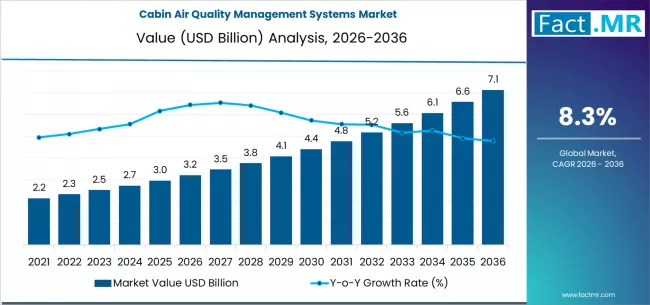













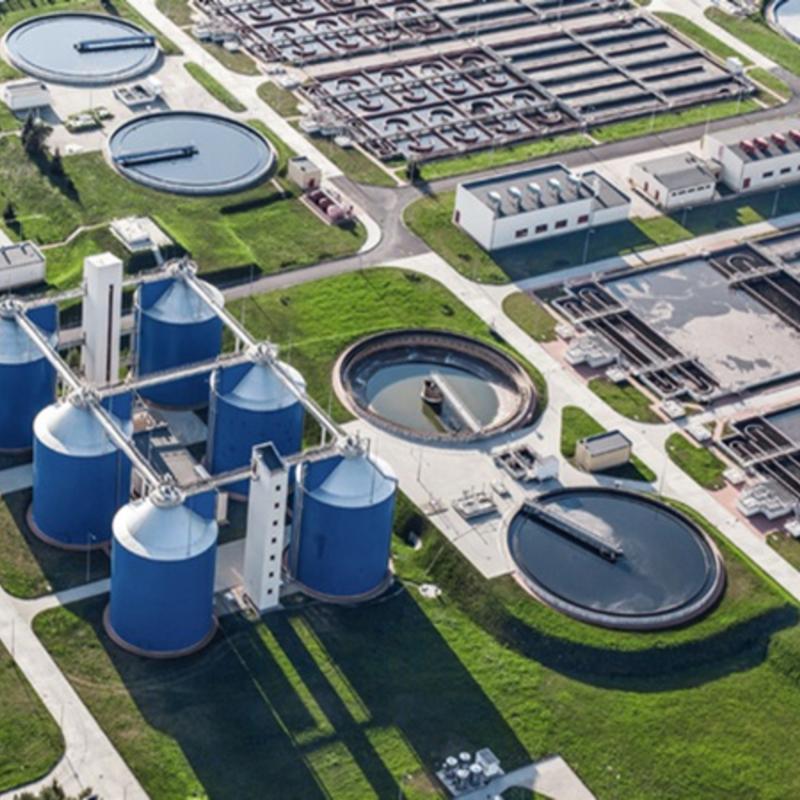




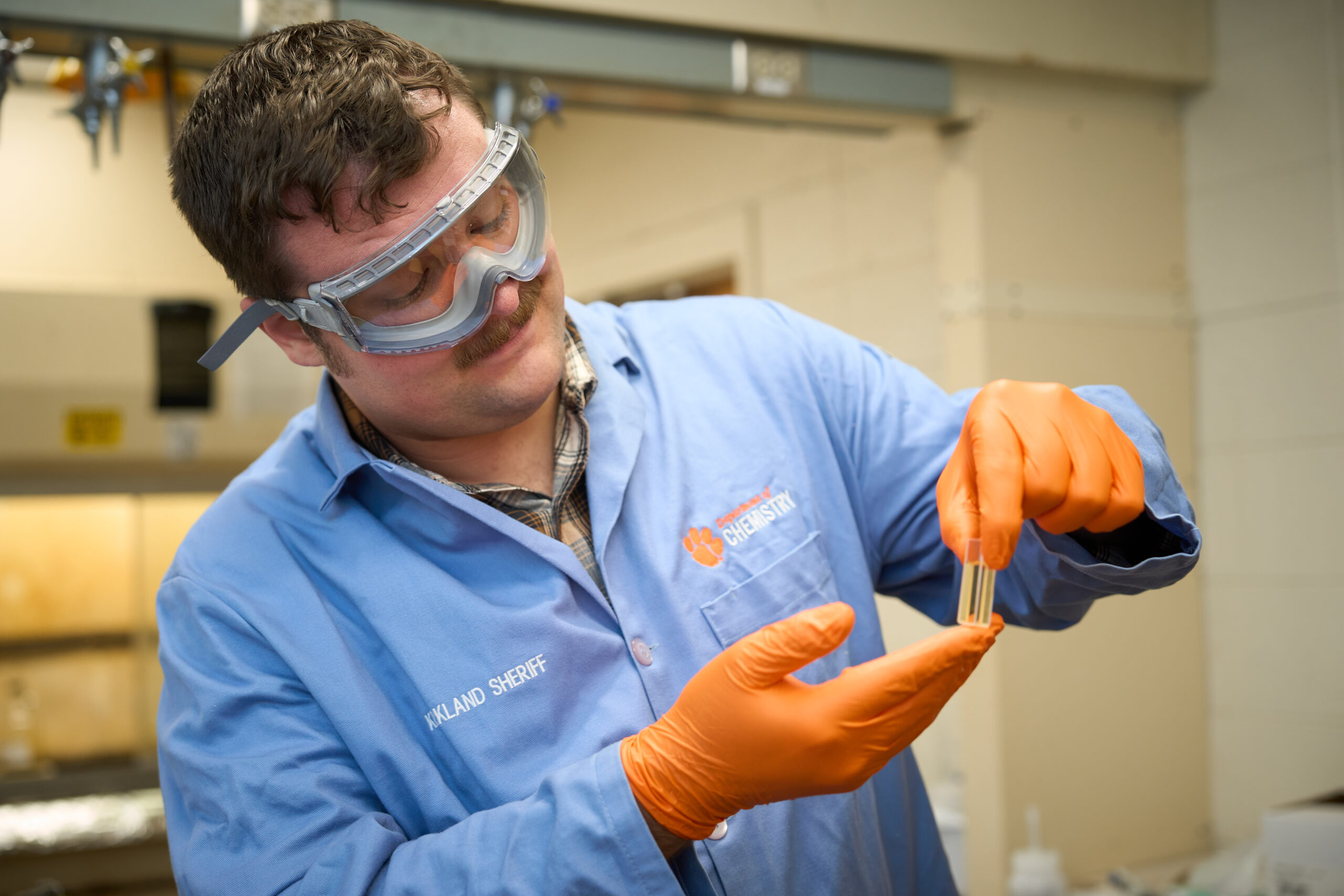


















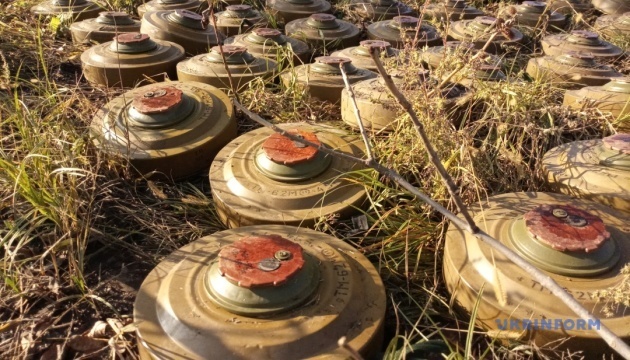
;Resize=620#)












